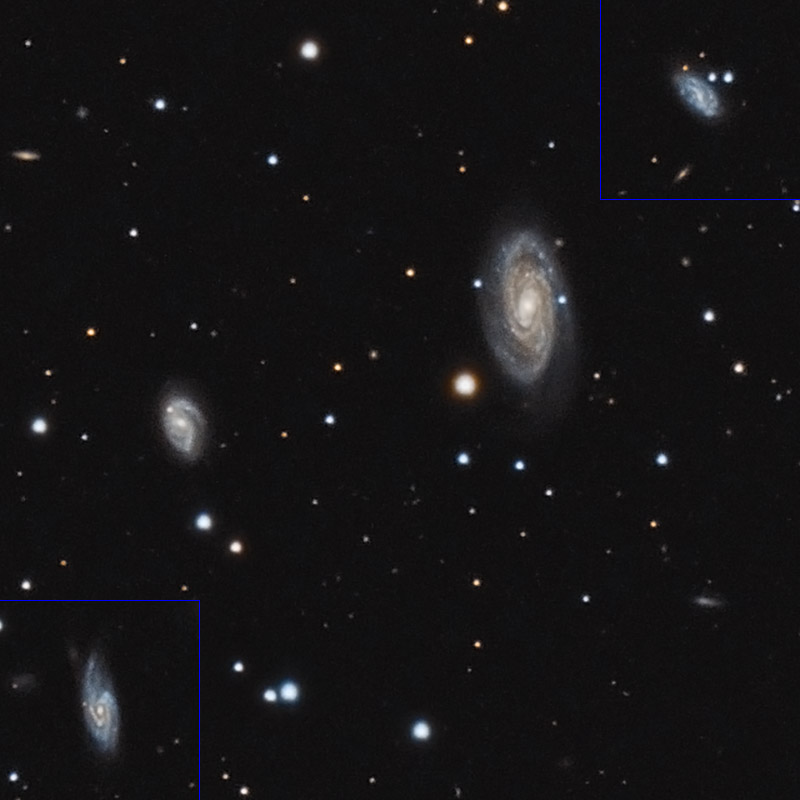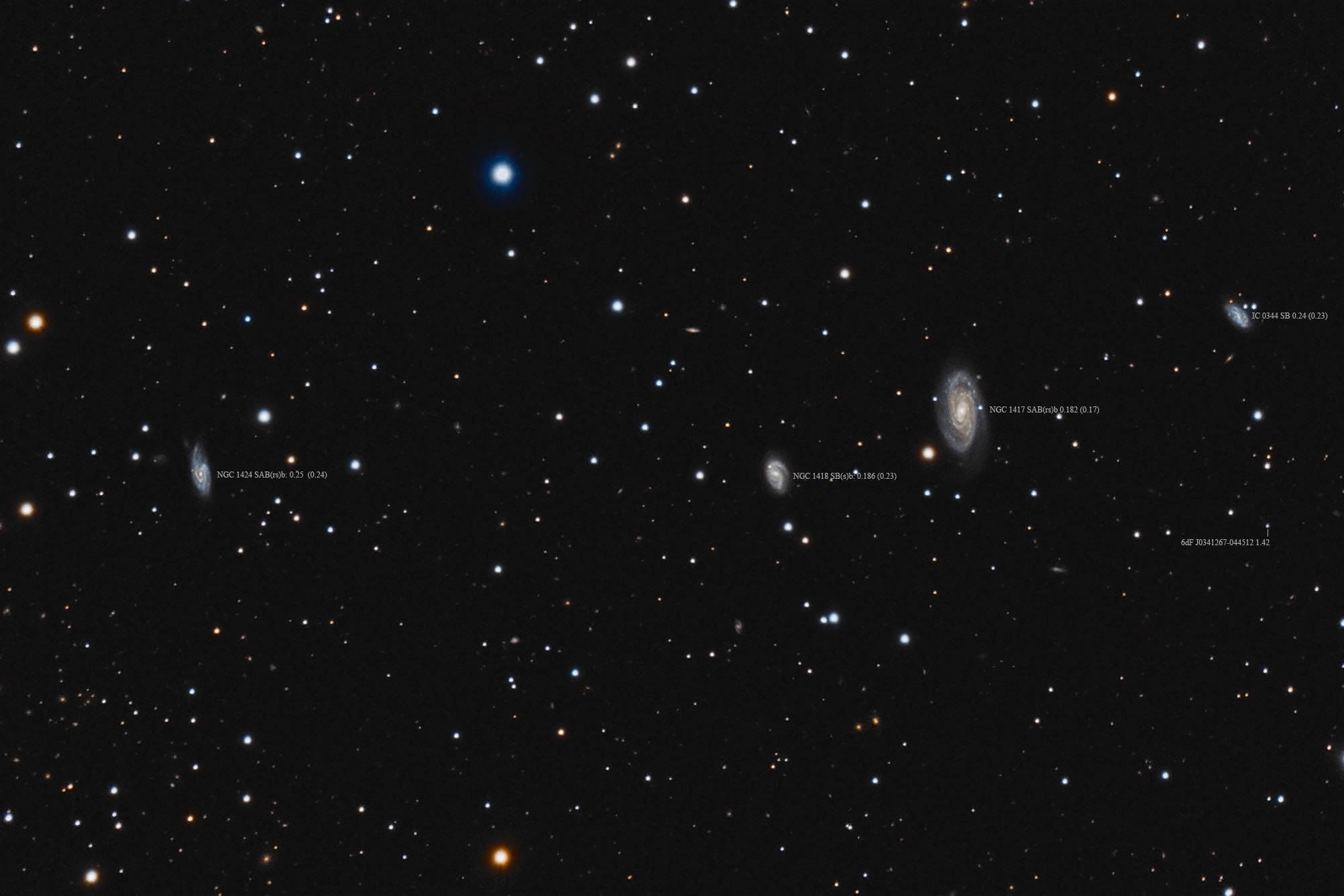| Description | Images |
Object name: NGC1417Designation(s): NGC1417, NGC1418, NGC1424, IC0344, This field is located in northern Eridanus. It consists of 3 NGC galaxies and one IC galaxy. Various sources group them differently. Some consider the two center ones as a pair, others include either the far eastern or western one to make a triple and yet others say this is all part of one small group that includes members outside my field. All agree there's no interaction between any of them. By redshift, the two center ones, NGC 1417 and NGC 1418 are related while the two outside ones, IC 344 and NGC 1424, are related. If your use Tully-Fisher distance measurements then NGC 1417 doesn't belong to the other three. To my eye, I have better resolution of NGC 1417 than the other three indicating it is closer. Thus I'm leaning that way though none of the sources I looked at group them that way. But what do I know? Related Designation(s):2MASS J03412957-0439572, 2MASS J03415741-0442174, 2MASS J03415743-0442203, 2MASS J03421616-0443510, 2MASS J03431402-0443487, 2MASX J03412959-0439568, 2MASX J03415742-0442174, 2MASX J03421615-0443505, 2MASX J03431405-0443481, 2MASXi J0341296-043956, 2MASXi J0341574-044217, 2MASXi J0342161-044353, 2MASXi J0343139-044351, 6dF J0343140-044348, AGC 430418, AGC 430424, AGC 430428, AGC 430441, APMUKS(BJ) B033928.00-045149.9, CGS 213, GSC 4720 00439, GSC 4720 00735, GSC 4720 00977, GSC 4720 01335, HDCE 0245 NED001, HIPASS J0341-04b, HOLM 070A, HOLM 070B, IC 0344, IC0344, IRAS 03394-0451, IRAS 03407-0453, IRAS F03390-0449, IRAS F03394-0451, IRAS F03407-0453, LCSB L0205O, LDCE 0260 NED003, LDCE 0260 NED004, LDCE 0261 NED006, LGG 103:[G93] 004, LGG 103:[G93] 005, MCG -01-10-020, MCG -01-10-021, MCG -01-10-022, MCG -01-10-026, NGC 1417, NGC 1418, NGC 1424, NGC1417, NGC1418, NGC1424, NVSS J034128-043959, NVSS J034157-044218, NVSS J034314-044350, PGC 013568, PGC 013584, PGC 013606, PGC 013664, USGC S131 NED01, USGC S131 NED02, USGC S132 NED02, USGC S132 NED03, | Permanent link: https://images.mantrapskies.com/catalog/NGC/NGC1417-NGC1418-NGC1424-IC0344/NGC1418L4X10RB2X10G1X10R-CROP125.JPG |


